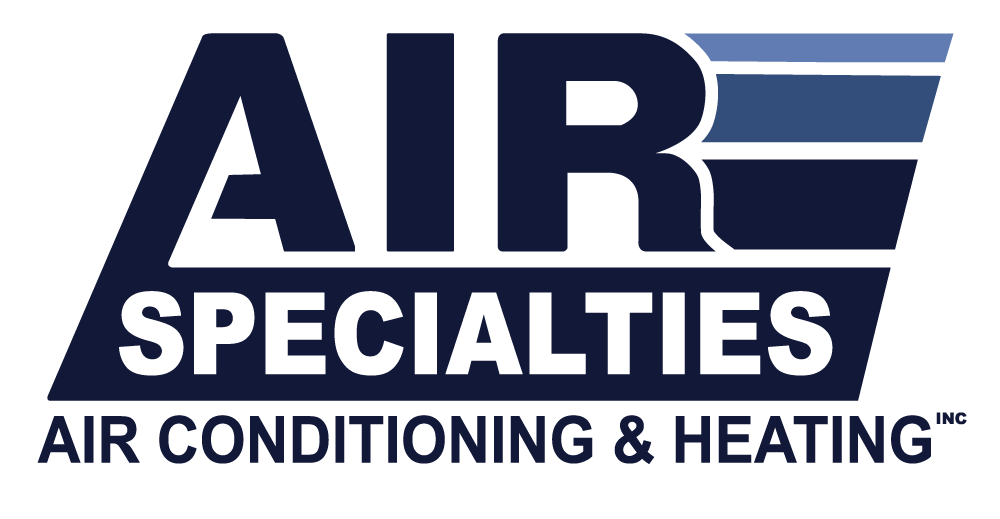Choosing the right cooling system for your home can feel like a big decision, and it is! From comfort to cost and even indoor air quality, the system you install affects how you live, day in and day out. If you’re stuck deciding between a mini-split and a central air conditioning system, you’re not alone.
At Air Specialties, our air conditioning experts help homeowners throughout our community find the best HVAC solutions for their homes, lifestyle, and budget. Let’s break down the “mini-split vs central air” debate so you can confidently choose the right system for your space.
Understanding How Each System Works
Before diving into the pros and cons, it’s helpful to understand how these two systems function.
Central air conditioning uses a single outdoor condenser unit connected to an indoor air handler, typically located in a basement, attic, or utility room. Cooled refrigerant inside the evaporator coil absorbs heat from the indoor air as it passes over the coil. A blower then pushes the now-cooled air through a network of ducts, which distributes it to various rooms via ceiling or floor vents. A thermostat controls the entire system, regulating temperature throughout the house.
Mini-split systems, on the other hand, consist of one or more indoor wall-mounted units connected to an outdoor compressor. Each indoor unit cools a specific room or zone, and no ductwork is required. The setup allows for precise control, which is especially useful for zoning comfort across different parts of the home.
Energy Efficiency and Cost Comparison
When it comes to energy use and long-term cost, both systems offer benefits — but they do so differently.
Mini-splits are known for having high Seasonal Energy Efficiency Ratios, better known as SEER ratings, which can significantly reduce electricity bills in smaller homes or homes where only a few rooms need cooling. Since there are no ducts, there’s also no risk of heat transfer loss through leaks or poor insulation. Mini-splits are great for reducing humidity, especially when paired with a dehumidifier or built-in air purifier.
Central air is typically more cost-effective upfront for larger homes, particularly if ductwork already exists. It delivers consistent, even temperatures throughout the house, making it ideal for families who want uniform comfort in every room. While duct systems do require routine maintenance, like filter replacements and occasional cleaning, this upkeep supports better indoor air quality and system efficiency.
Comfort, Zoning, and Temperature Control
A major difference in the “mini-split vs central air” debate is how each system delivers comfort.
Central air keeps the entire house at one temperature, which is convenient for homes where all rooms are frequently used. It’s a seamless part of many home automation systems and works well with existing furnace setups for combined heating and cooling coverage.
Mini-splits shine when it comes to zoning. Want your bedroom cool but your kitchen warm? No problem. Each unit comes with its own thermostat, so you can control temperatures individually. This also means you won’t waste energy cooling unoccupied spaces like guest rooms or the basement. Plus, since they don’t rely on shared air handlers, mini-splits can provide better filtration in high-traffic or allergy-prone areas.
Installation, Space, and Aesthetics
Installation logistics often play a big role in choosing between these two systems.
Central air installation can be complex, especially in older homes without ductwork or central heating. The system must integrate with your existing gas or electric furnace and often involves running pipes, setting up fans, and sealing ductwork. However, once installed, it’s mostly hidden from view.
Mini-splits offer quicker and less invasive installation. Since they’re wall-mounted and don’t require ducts, they’re ideal for additions, sunrooms, garages, or any space without existing ventilation. Some homeowners don’t love the look of wall units, but modern designs are getting sleeker — and the efficiency and comfort can make them worth it.
Longevity, Maintenance, and Warranty Considerations
Both systems require maintenance but in slightly different ways.
Central systems need regular duct inspections, air filter changes, and annual maintenance. If neglected, issues like mold buildup or poor humidity control can arise, affecting both efficiency and indoor air quality.
Mini-splits also require filter replacement and equipment maintenance. Since each room has its own unit, maintenance may involve multiple checks — but many find the zoning benefits worth it.
Both systems typically come with a warranty covering parts like the fan, compressor, or electrical wiring, though terms can vary based on the brand and installer. Choosing a reliable contractor like Air Specialties ensures your system is installed correctly and covered by a strong service plan.
Which One Is Right for You?
So, mini-split vs. central air. Which wins? The answer depends on your home’s layout, energy goals, and how you use your space.
If you’re looking to cool your entire home uniformly and already have ductwork in place, central air might be your best bet. But if you’re adding a new room, need flexible zoning, or want better efficiency in specific areas like your bedroom or kitchen, a mini-split could be the ideal solution.
No matter which option you’re leaning toward, Air Specialties is here to help you make the right choice for your comfort, climate, and budget. Ready to explore your options? Contact us today to schedule a consultation and find out which cooling system fits your home like a breeze!

